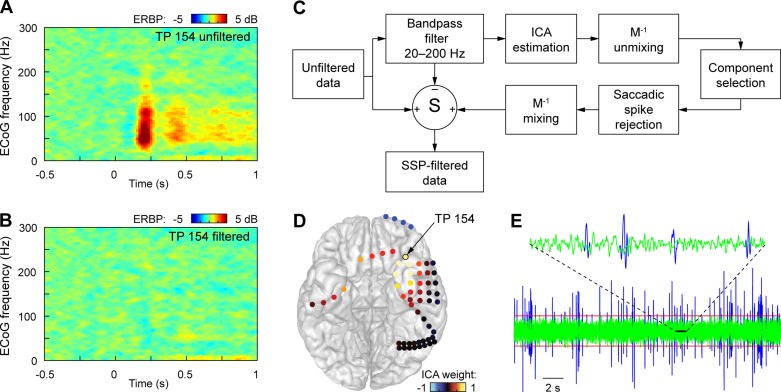Fig. 2.
Removal of eye-muscle contamination. The presence of the saccade-related EMG response from extraocular muscles, the saccadic spike potential (SSP), may create the appearance of an induced cortical high-gamma responses following trial onset (A), which is eliminated when the EMG contamination is suppressed (B) (exemplary data from a temporal pole contact TP 154). The procedure to remove the SSP is summarized in C. Independent component analysis (ICA) is performed on data filtered in the spectral the range of the SSP. Components related to oculomotor EMG are identified by their spatial loadings, which are characteristically large near the orbits (D), and by the presence of visually obvious SSPs in the component activation (E, blue line). To minimize the suppression of cortical responses at the temporal pole that may result from a simple ICA spatial filter, SSPs identified by thresholding (E, red line) are removed from the selected ICA component activations through windowing (E, green line). Decontaminated data are reconstructed by applying the inverse mixing transformation to the modified ICA activations, subtracting the untreated frequency-filtered data from the original data and adding the ICA-filtered response.

